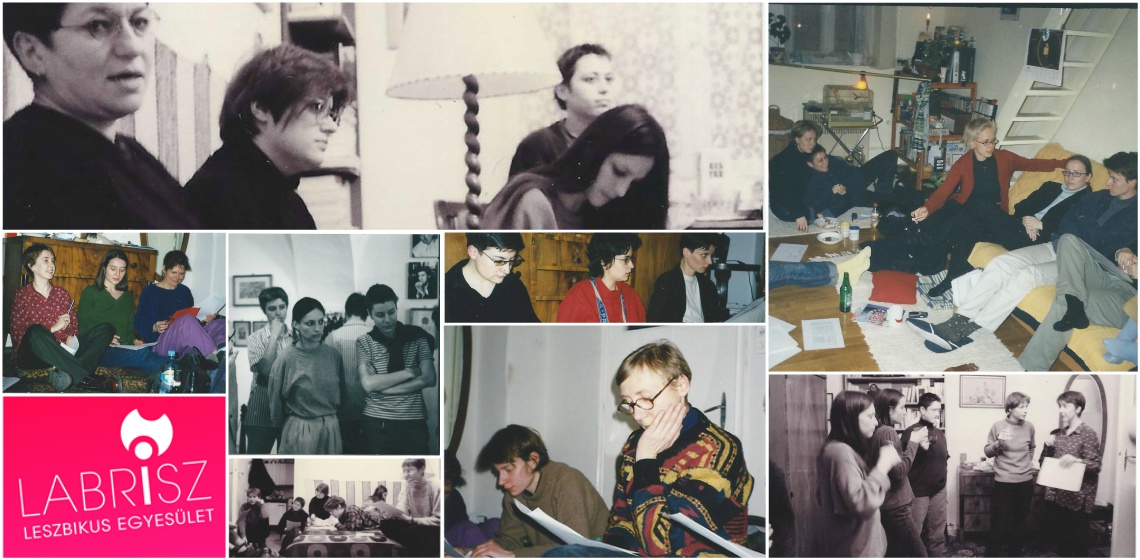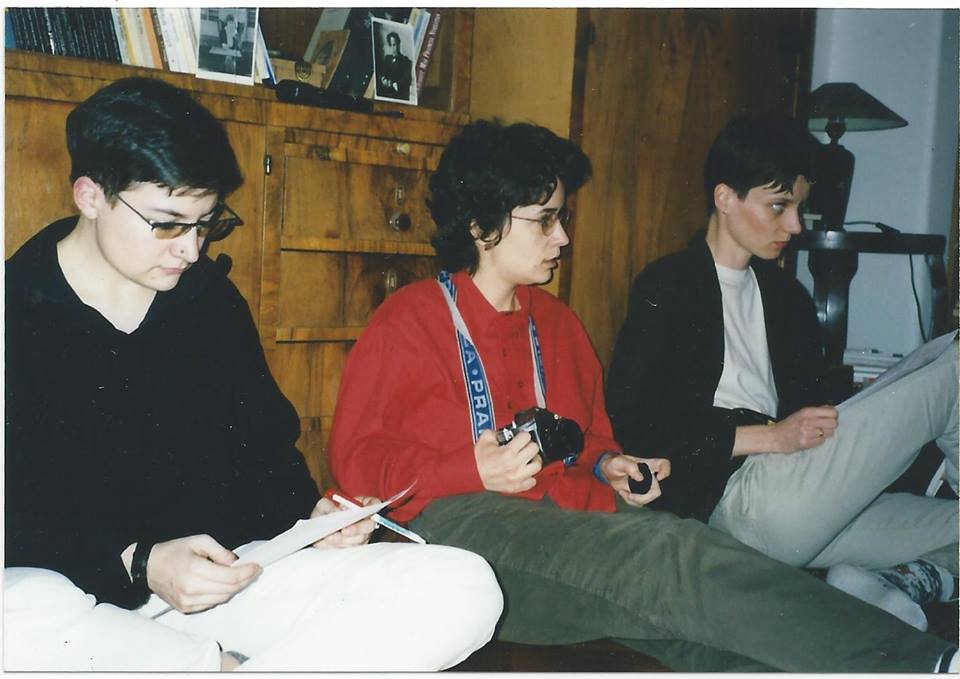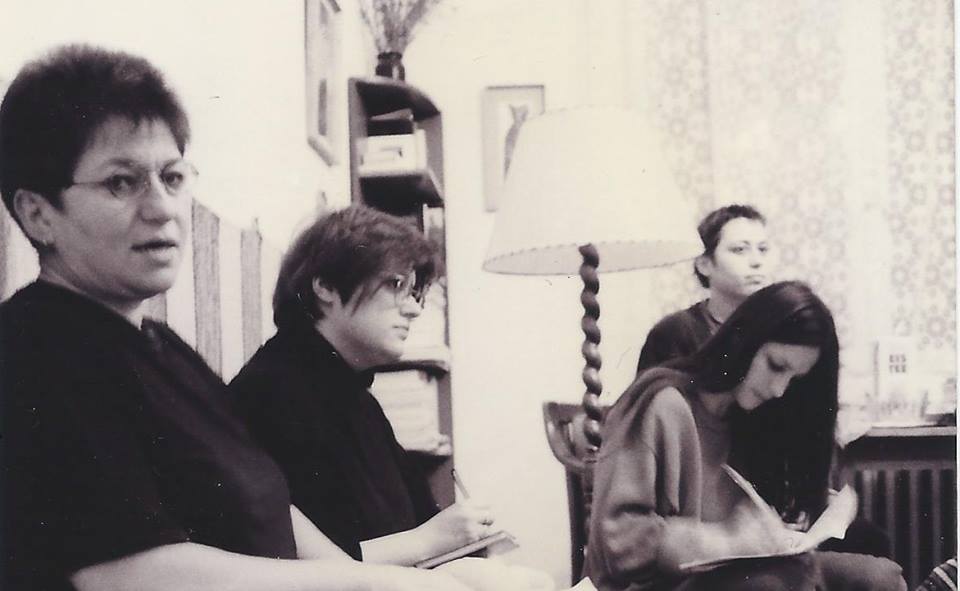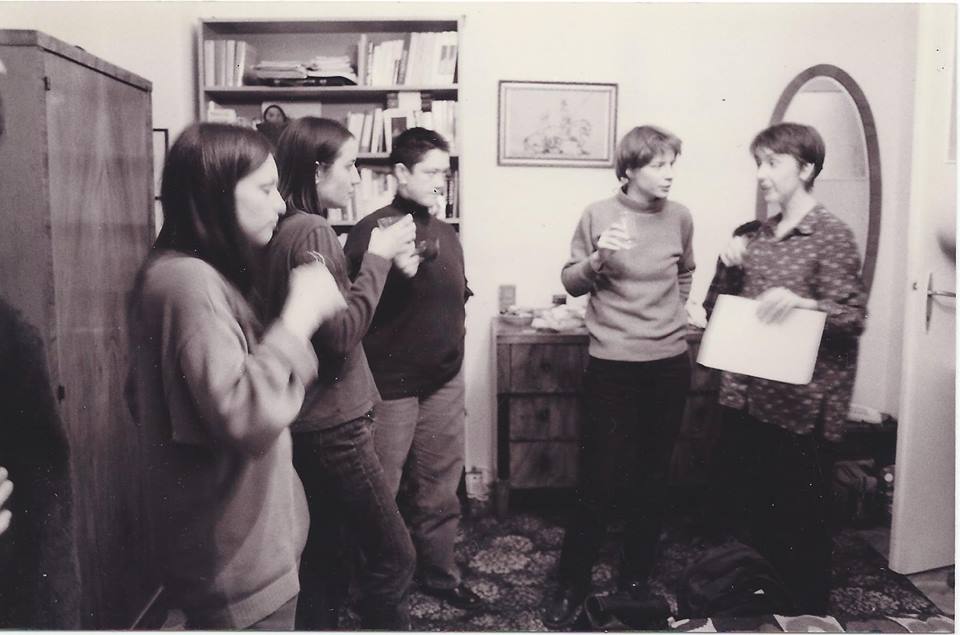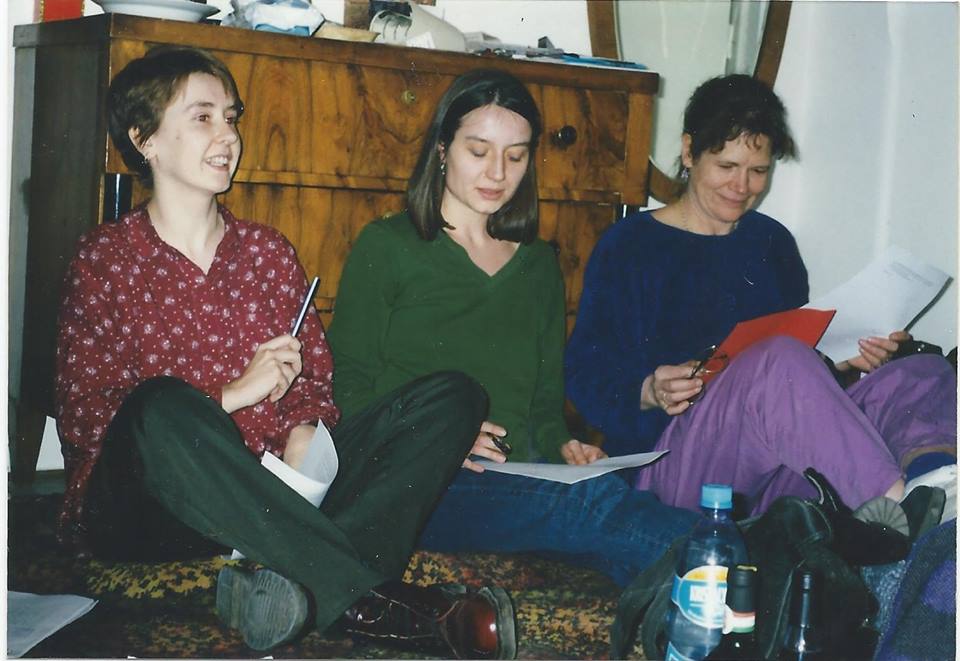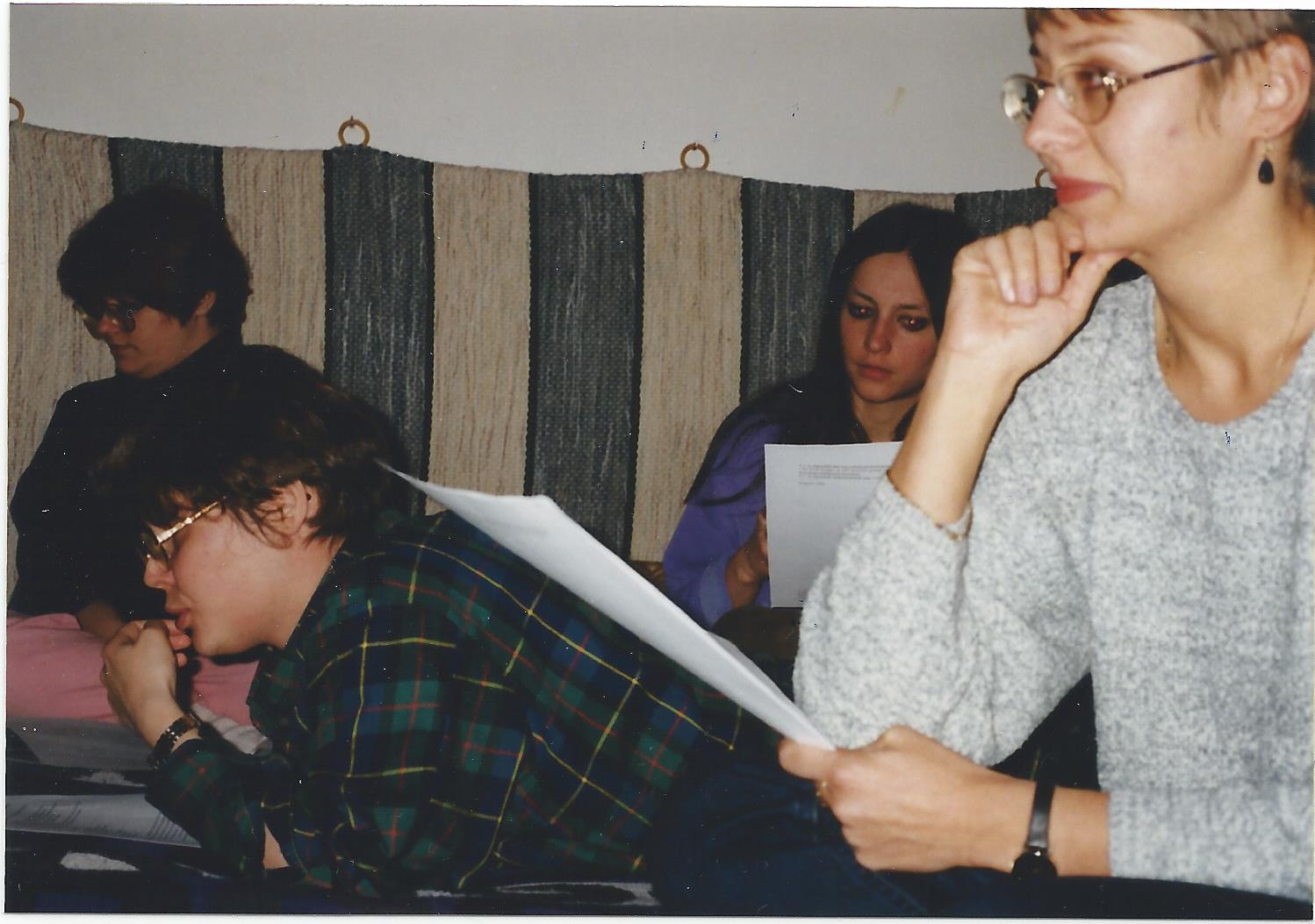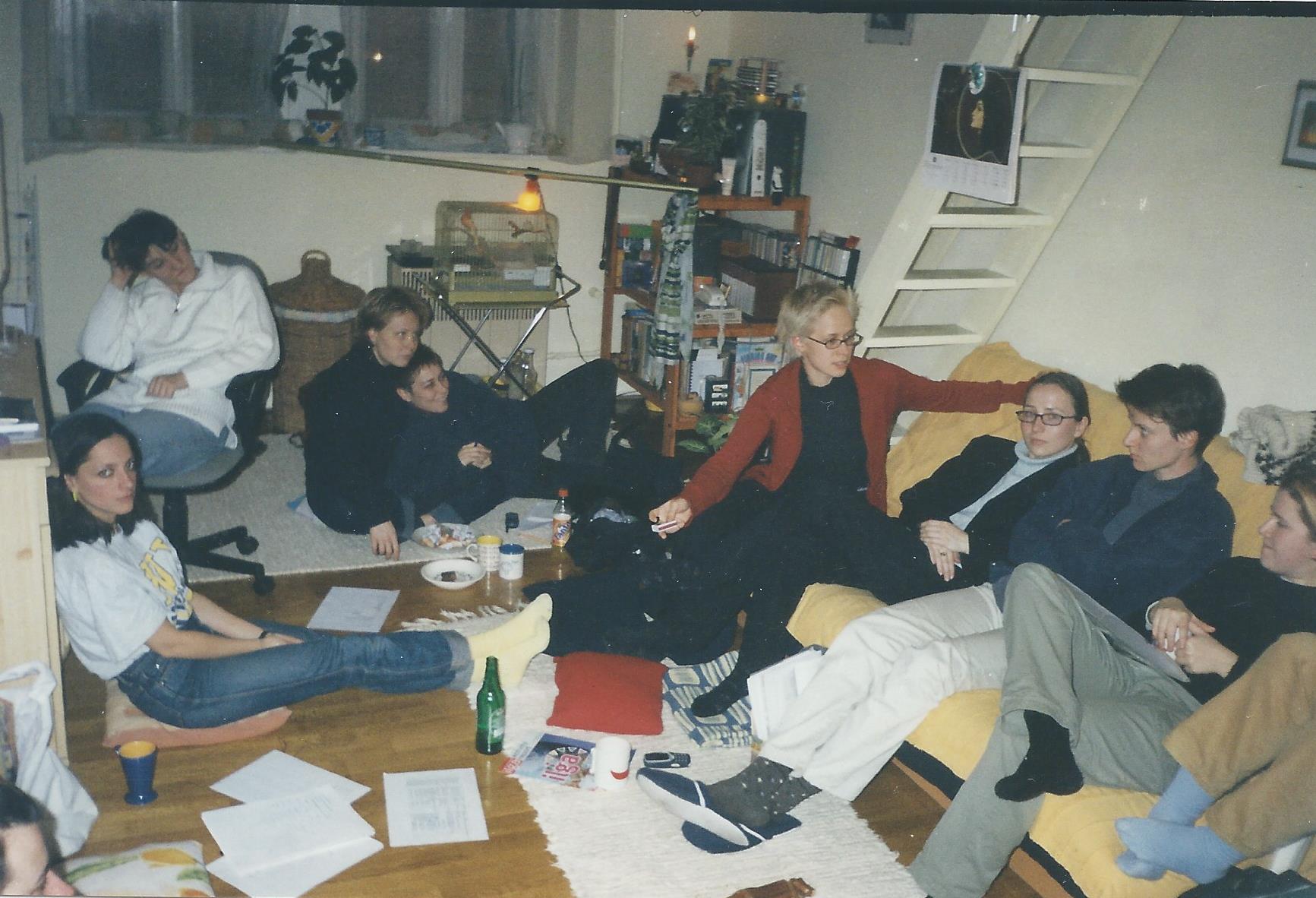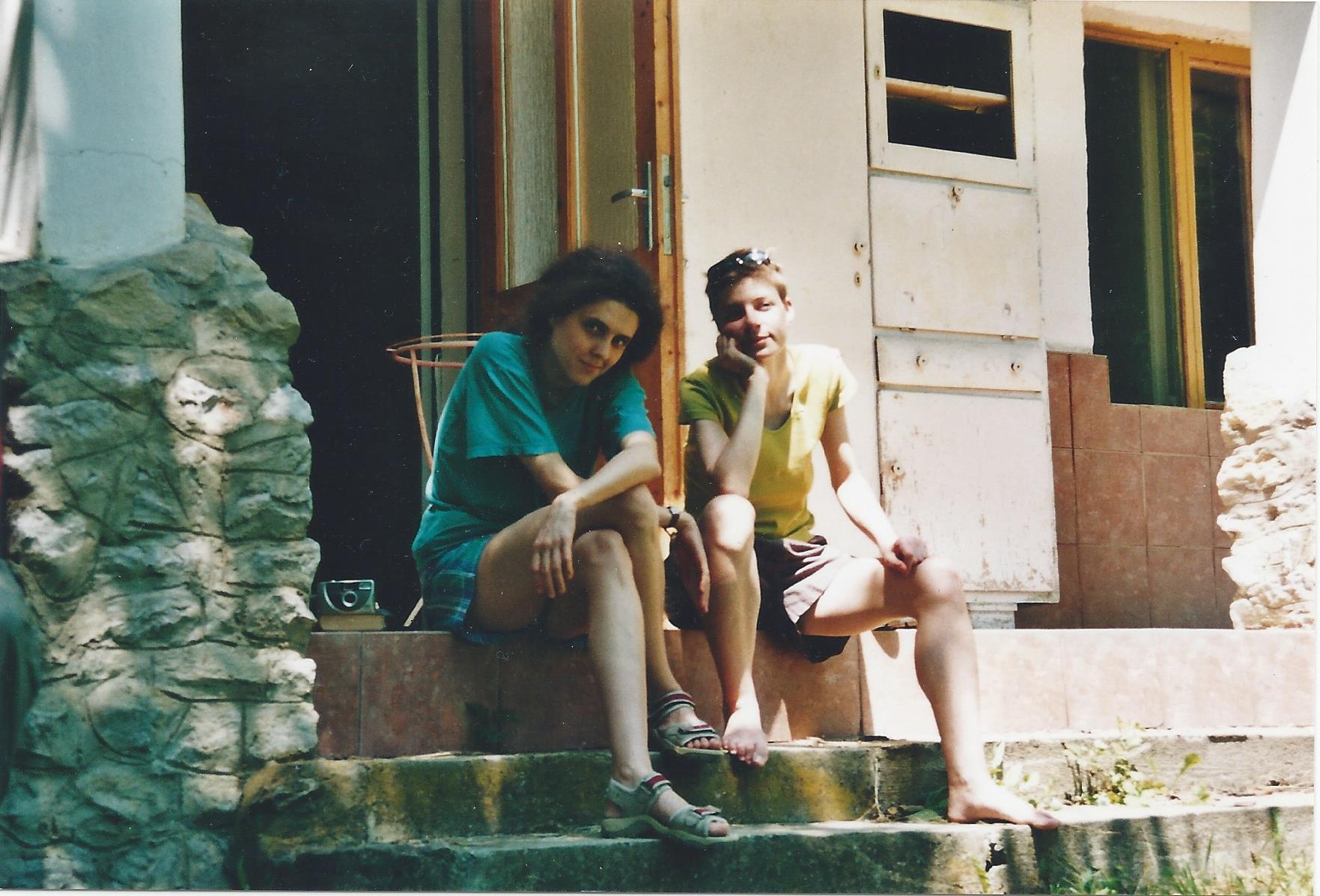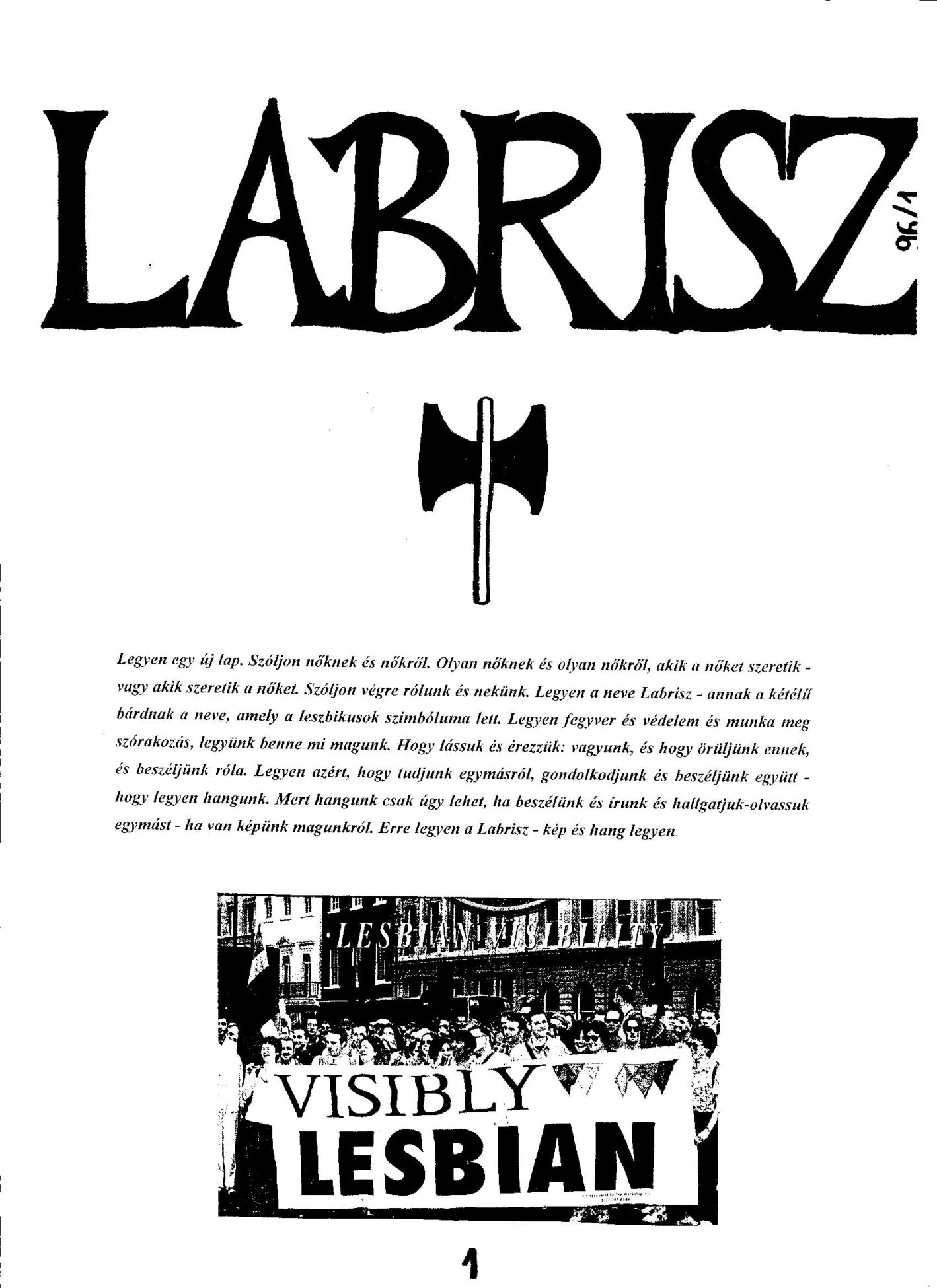Labrisz Lesbian Association, Hungary’s first and only lesbian organisation is 18 years old now. Reaching adulthood it is worth to stop for a while and look back to the beginnings. What led a few, strong-willed lesbians to turn the friendly meetings to an organisation and form Labrisz?
The association, which was officially registered in November 1999, had already been organising events for 3 years beforehand. Some lesbians had published an unofficial newspaper called Labrisz, and later on they used to organise discussions for the readers. Labrisz was formed by around 10 lesbians who gathered on these Labrisz nights. For the accurate nostalgia, 3 of the original founders are guiding us through pictures and memories.
The Beginnings
Anna Borgos: At Háttér Society where I was volunteering at that time, there were some women, but always more men and guys. It came up that it is good that we have this association, but there are some issues that concerns more women, especially lesbians. There was a claim for lesbian scope. This only reached some people first. On Labrisz nights (we already called them this back then) there were permanent core members gathering who had an inner will and purpose. Bea Sándor triggered that we should form an official association, so that the activities could proceed in a more structured way.
Bea Sándor: First we photocopied our newspaper, which we advertised in the journal called Mások (“Others” meaning Gays). Then we came up with the idea to send it via post (to the ones asking for it) that in two months we will have a discussion a.k.a. a Labrisz night. Surprisingly, many people asked for the newspaper and quite a lot showed up on the first event (10-15 women). A few events were organised in the place called “Óvegylet”, later on these nights were held in the office of another association.
Mária Takács: This original feminist wave was quite strong - I hope it still is - amongst lesbians. We felt the need of having a separate lesbian organisation as well. We had to form an official association to be able to apply to Astraea Foundation and to publish our first lesbian book (the volume called “Lesbian space-force” containing essays). This we could only do as a registered organisation.

10 of us got together at the apartment of one of us, because to form an association you need at least 10 people. We studied the constitution of Háttér Association, which we based ours on. It was a big question who to nominate as ambassadors, we had to submit their names and addresses at the court. Many said that they are not willing to do it. Finally we had the 3 nominees, then Anna took a bottle of champagne and we had a toast.
Soon after this, it was NANE who gave us space at their office on Gutenberg square. Very soon we experienced the female solidarity coming from the most important feminist organisation at that time.
How did lesbians learn about Labrisz?
Anna: From the early 2000 we published coloured newsletters monthly, which we sent via post, and 40-50 women could meet up at a Labrisz night. There was no internet back then, there were no parties or other programs. It was only this or the activism. If you wanted to meet women, you had to be an activist. I think this is how I drifted into it. I didn’t think of me as being a big vanguard of a movement but I wanted to meet women with the same mindset. And maybe somewhere in me I had an ambition we could as well call an activist willing.
How did people react?
Bea: Many people supported the association but of course there were uncomprehending voices, too, asking why there is a need for such thing. On a social level we needed time to gain some acquaintance; our first truly significant project was the school program (Getting to know LGBT people).
Mari: Lots of activist gay guys were questioning why we needed this. Parallely we had the discussion about why there is a need for separate women’s parties.
What was the goal?
Anna: Pretty fast, two directions emerged: first to have a social theme, a safe space, programs and discussions and secondly to communicate to broader layers of society. To loosen stereotypes and to make ourselves visible.
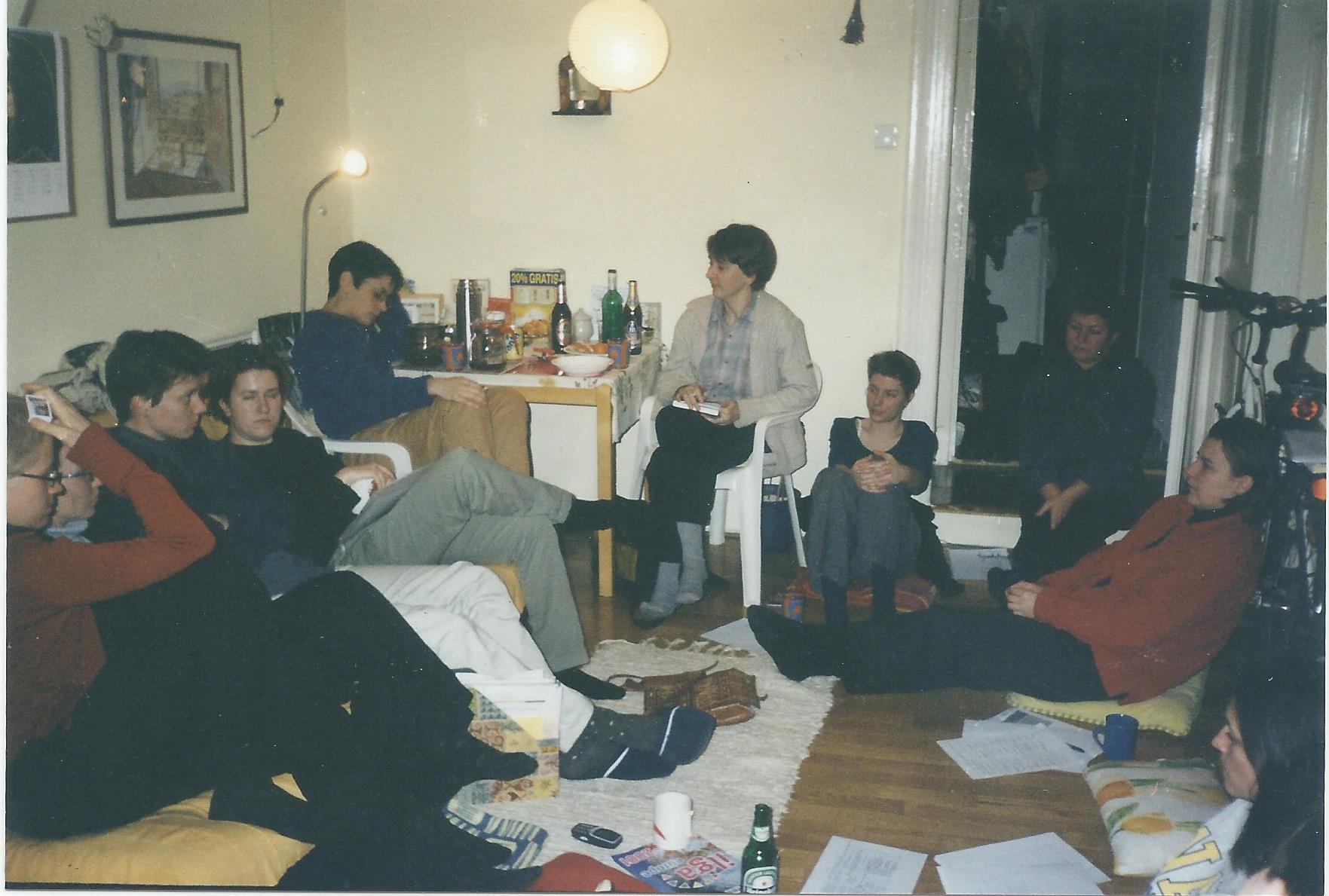
Bea: We planned to keep holding Labrisz nights and to publish papers/books. And then whatever the members and attendees are keen on, what they have in mind and what is feasible.
Mari: We were constantly forming new goals, based on the capability of the members. We established a school program, a website, we organised parties. There were mostly carnival parties, but we did others too. For example “Ösztrosokk” grew from one of our carnival parties that we held in Sokk Café. But we are also founders of Budapest Pride. And besides these we also have our political goals and to cooperate with other associations.
What do these 18 years mean?
Anna: We can’t always operate with the same capacity but we have the basics and we can build on them. I think it is a value that we can search ourselves. Are we doing well what we are doing? We deal with the feedbacks and reflect ourselves. For me, Labrisz is an important reinforcing, friendly, creative community. I’m happy to be in it from the beginning. The early past-Socialist years, when civil organisations started to be formed,fortunately coincided with my coming out. So it is very important also in my life history.
Mari: I think it’s very cool that we’ve been operating for 18 years. Continuity is what’s the most important. With Labrisz we’ve been able to reach people in the lesbian community, with our regular programs, we have created meeting spaces. I feel a bit sorry that there are no other lesbian associations. But there are organisations and channels or even just groups of friends where lesbian and bisexual women can meet. Maybe Labrisz have contributes to these as well.
For more pictures click the gallery!
Translated by Zsófi Bártfai

